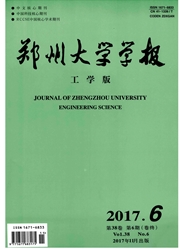

 中文摘要:
中文摘要:
采用阳极氧化法制备了孔径为60~80 nm,壁厚约为20~30 nm的高有序TiO2纳米管阵列,并通过氨气氛下退火处理对TiO2纳米管进行N掺杂.利用扫描电子显微镜(SEM)、X射线衍射(XRD)、喇曼光谱(Raman)及X射线光电子能谱(XPS)对得到的薄膜进行表征.SEM结果显示,经掺N后样品仍呈纳米管阵列的有序结构.XRD和Raman光谱研究表明,经过阳极氧化并在NH3气氛中500℃退火30min的纳米管阵列为锐钛矿与金红石晶型共存的TiO2,且N的引入促进了TiO2纳米管在低温下由锐钛矿相向金红石相的转变.N掺杂样品XPS中出现了结合能位于399.7 eV的N1s峰,该峰来源于TiO2的间隙N杂质原子,显示此方法在TiO2纳米管中实现了有效的N掺杂.
 英文摘要:
英文摘要:
Highly ordered nanotubes with diameter of 60~80 nm,wall thickness of 20~30 nm were obtained by anodic oxidizing method.Nitrogen-doping was carried out by annealing of the anodized titania nanotubes under ammonia atmosphere.The morphologies,crystal structure and composition of both doped and undoped samples were characterized by Scanning Electronic Microscope(SEM),X-ray Diffraction(XRD),Raman spectroscopy and X-ray Photoelectronic Spectroscopy(XPS).The ordered structure of titania nanotubes maintained after the nitrogen doping process as evidenced by SEM observations.XRD and Raman spectra analysis revealed that the resultant nanotube arrays obtained by annealing in ammonia at 500 ℃ for 1h are composed of anatase and rutile titania,and the incorporated nitrogen may have facilitated the phase transition of titania nanotube from anatase to rutile.The effective doping of nitrogen into titania nanotubes was evidenced by the occurrence of N1s peak of the nitrogen-doped titania nanotubes in XPS with a binding energy of 399.7 eV,which was attributed to the interstitial nitrogen dopant in the anatase lattice.
 同期刊论文项目
同期刊论文项目
 同项目期刊论文
同项目期刊论文
 Preparation of titanium carbide powders by sol-gel and microwave carbothermal reduction methods at l
Preparation of titanium carbide powders by sol-gel and microwave carbothermal reduction methods at l Grain Size Control of Calcined SnO2 Nanocrystals: Raman Study and Room Temperature Ethanol Sensing P
Grain Size Control of Calcined SnO2 Nanocrystals: Raman Study and Room Temperature Ethanol Sensing P 期刊信息
期刊信息
